m/v Ortelius
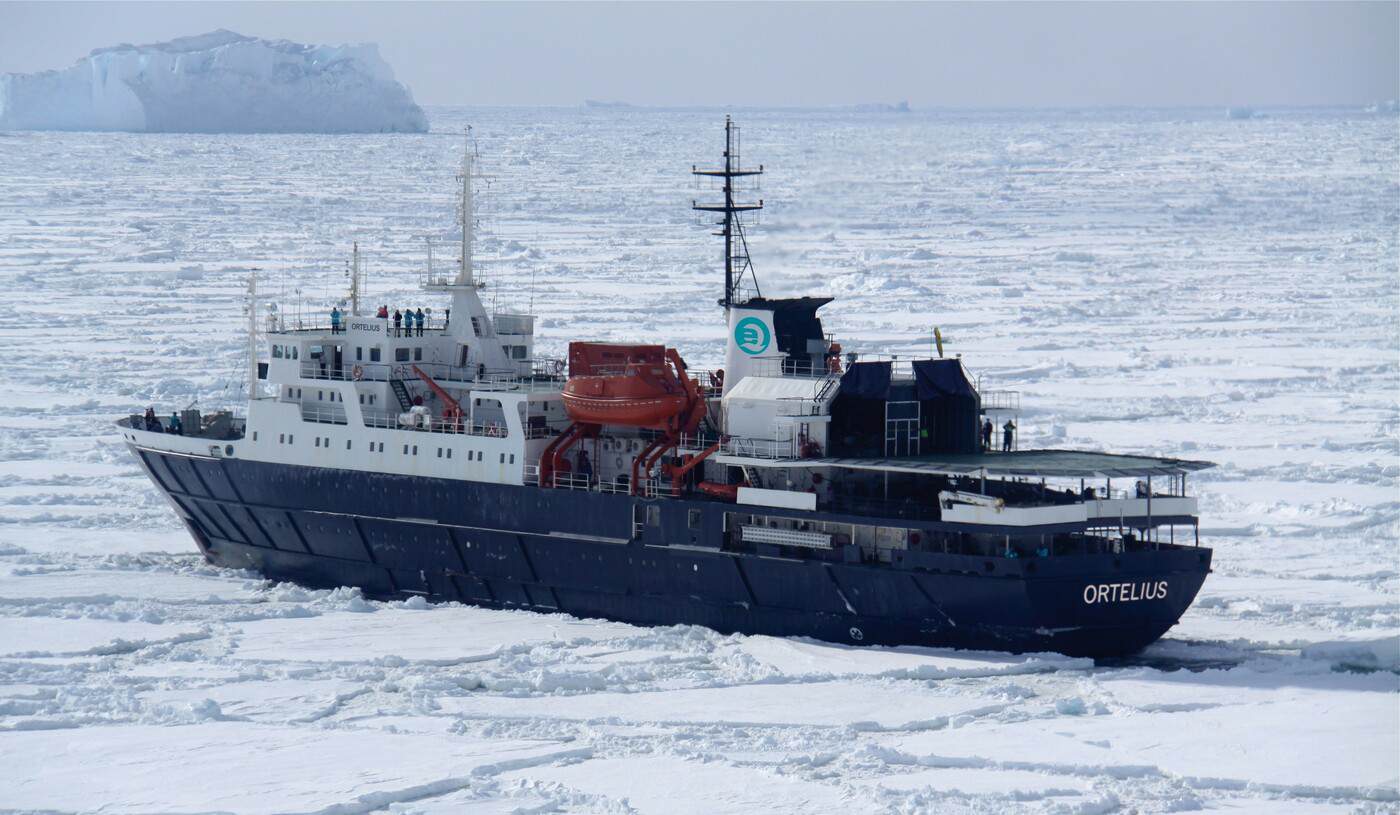


Ortelius was originally the Marina Svetaeva. Built in Gdynia, Poland in 1989, it served as a special-purpose vessel for the Russian Academy of Science. Later it was re-flagged and renamed after the Dutch/Flemish cartographer Abraham Ortelius (1527 – 1598), who in 1570 published the first modern world atlas: Theatrum Orbis Terrarum or Theater of the World. At that time his atlas was the most expensive book ever printed. Ortelius is classed by Lloyd’s Register in London and flies the Dutch flag.
The vessel has the highest ice-class notation (UL1, equivalent to 1A) and is therefor suitable to navigate in solid one-year sea ice as well as loose multi-year pack ice. Ortelius can accommodate up to 108 passengers and has an abundance of open-deck spaces. It is manned by 22 highly experienced nautical crew members, 19 hotel staff, eight expedition specialists (one expedition leader, one assistant, and six lecturer-guides), and one doctor.

- Size boutique
- Style Expedition
- Type ocean
- Year of launch 1989
- Year of last refit 2019
- Gross tonnage 4090t
- Length 91.0m
- Width 17.0m
- Speed 11kts
- Decks 3
- Language English
- Currency Euro (€)
- No. of passengers 108
- No. of crew 53
- No. of cabins 50
The customary gratuity to the ship’s service personnel is made as a blanket contribution at the end of the voyage and is divided among the crew. Tipping is a personal matter, and the amount you wish to give is at your sole discretion. As a generally accepted guideline, we suggest 8 ― 10 euros per passenger per day. It is better for the crew if you give cash.
The customary gratuity to the ship’s service personnel is made as a blanket contribution at the end of the voyage and is divided among the crew. Tipping is a personal matter, and the amount you wish to give is at your sole discretion. As a generally accepted guideline, we suggest 8 ― 10 euros per passenger per day. It is better for the crew if you give cash.
The vessel offers simple but comfortable cabins and public spaces • 4 quadruple cabins with bunk beds (these can also be used as triple or twin cabins)• 26 twin portholecabin with 2 single lower berths • 12 twincabins with windows and 2 single lowerberths • 2 twin deluxe cabins with windowsand 2 single lower berths • 6 superior cabinswith double beds. All cabins are spaciousoutside cabins with a minimum of two portholes or windows per cabin and all cabinshave private shower and toilet.
Please be aware that a small number of cabins may have a partially obstructed view due to the size of the windows and the design requirements of the ship. For example, some windows may be partly obstructed in the lower half by a gangway. The best view is always on the outer deck or the bridge. Though our voyages are primarily meant to offer our passengers an exploratory wildlife program with as much time ashore as possible, Ortelius offers all the comforts of a standard hotel ― along with a bar and lecture room. Flexibility assures maximum wildlife opportunities. As such, Ortelius carries 10 Zodiacs with 60hp Yamaha engines.
Superior




-
2 windows (minimum)
- 1 double bed
- 1 single (sofa) bed
- Private shower & toilet
- Desk & chair
- Flatscreen TV
- Telephone & WiFi (supplemented)
- Refrigerator
- Coffee & tea maker
- Hair dryer
- Safe deposit box
- Ample storage space
Twin Deluxe
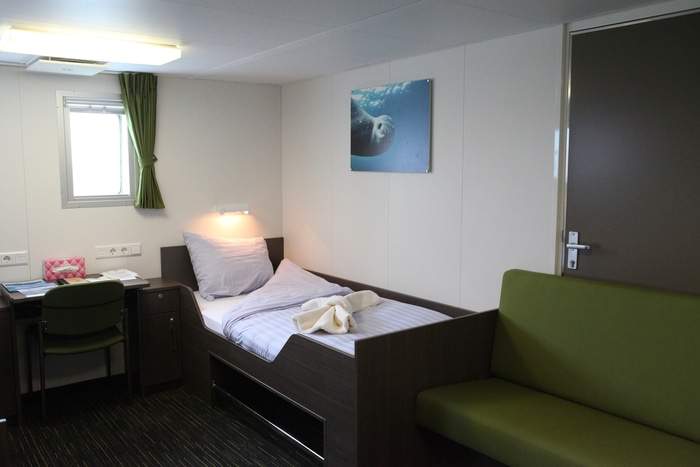





-
3 windows
- 2 lower berths
- Private shower & toilet
- Desk & chair
- Small sofa
- Refrigerator
- Coffee & tea maker
- Flatscreen TV
- Telephone & WiFi (supplemented)
- Hair dryer
- Safe deposit box
- Ample storage space
Twin Window


- 2 windows
- 2 lower berths
- Private shower & toilet
- Desk & chair
- Flatscreen TV
- Telephone & WiFi (supplemented)
- Hair dryer
- Safe deposit box
- Ample storage space
Twin Porthole

-
2 portholes
- 2 lower berths
- Private shower & toilet
- Desk & chair
- Flatscreen TV
- Telephone & WiFi (supplemented)
- Hair dryer
- Safe deposit box
- Ample storage space
Triple Porthole

- 2 portholes
- 1 upper / lower berth + 1 single lower berth
- Private shower & toilet
- Desk & chair
- Flatscreen TV
- Telephone & WiFi (supplemented)
- Hair dryer
- Ample storage space
Quadruple Porthole

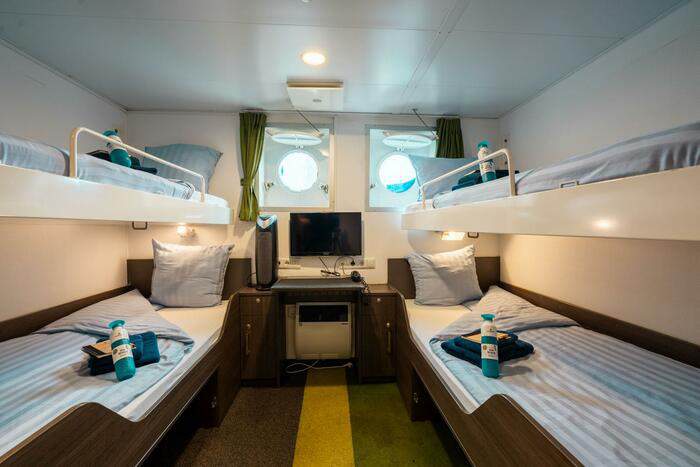



-
2 portholes
- 2 upper / lower berths
- Private shower & toilet
- Desk & chair
- Flatscreen TV
- Telephone & WiFi (supplemented)
- Hair dryer
- Safe deposit box
- Ample storage space
Deck 7

- Bridge
Deck 6

- Observation Lounge
- Bar
- Lifeboats
- Captain's Quarters
Deck 5

- Superior Cabins
- Twin Deluxe Cabins
- Twin Window Cabins
Deck 4

- Observation Deck
- Restaurant
- Reception
- Lobby
- Medical Centre
- Twin Porthole Cabins
Deck 3

-
Lecture Room
- Galley
- Crew Dining
- Expedition Office
- Twin Porthole Cabins
- Triple Porthole Cabins
- Quadruple Porthole Cabins
- Crew Quarters
We serve buffet-style breakfasts on board our motor vessels, and lunches are often buffets as well. Our dinners can also be offered in a buffet-style or are served at the tables and include a choice of main courses.
Dining





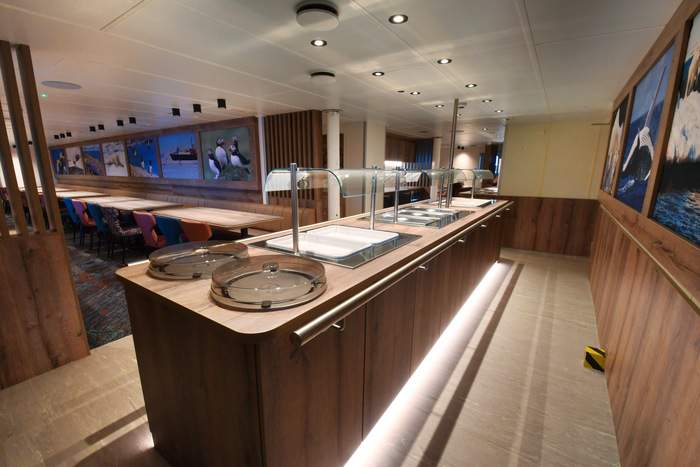

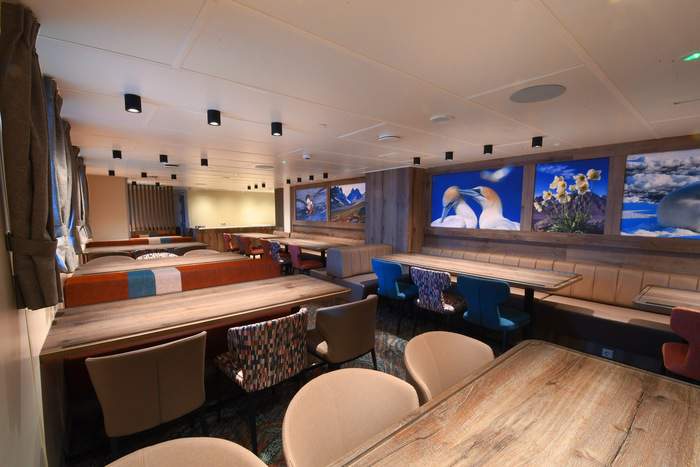

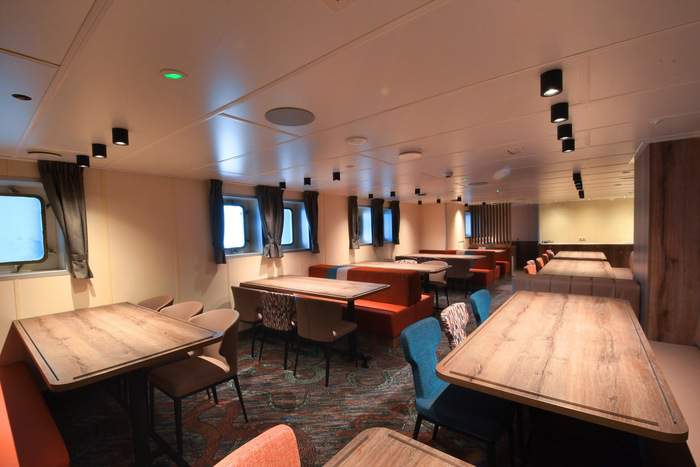
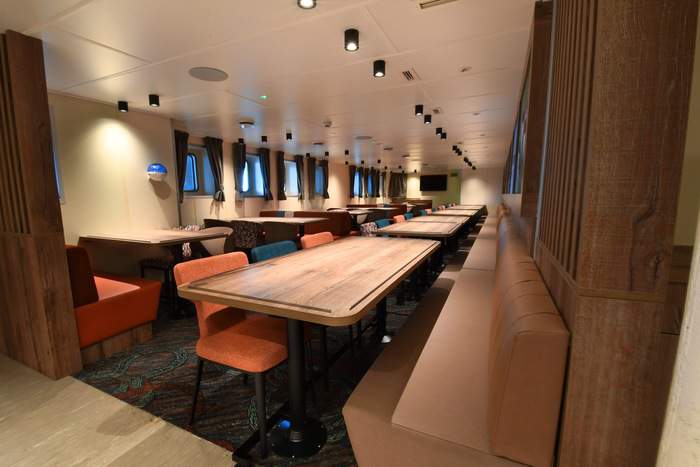

Buffet breakfasts include:
- eggs, bacon, & sausage
- hot cereal
- baked beans
- variety of breads
- cold-cut meats
- cereals
- crackers
- yogurt
- jams & preserves
- fruit platters
- pastries
Lunch buffets:
- soup & salad
- sandwich foods
- main course meal
- fruit basket
- dessert
- appetizer, soup, or salad
- main course meal (meat, fish, or vegetarian)
- dessert or fruit plate
Daily programs: breakfast, lunch, dinner. Furthermore there are informative lectures hosted by expedition staff. There is also a possibility for the passenger to relax in the lounge with a drink and enjoy the spectacular views.
Reception


One of the first places all new passengers see when they board the vessel, this reception area will greatly enhance their experience on one of our most longstanding ships.
Library
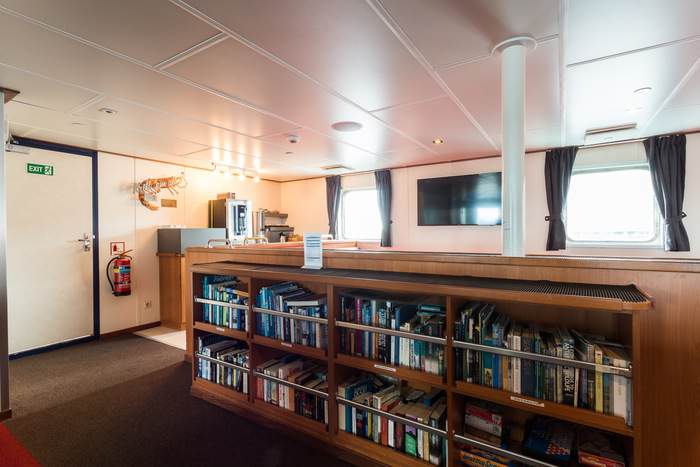

Several books and games can be found here to entertain you during the calm moments of your trip.
Observation Lounge & Bar


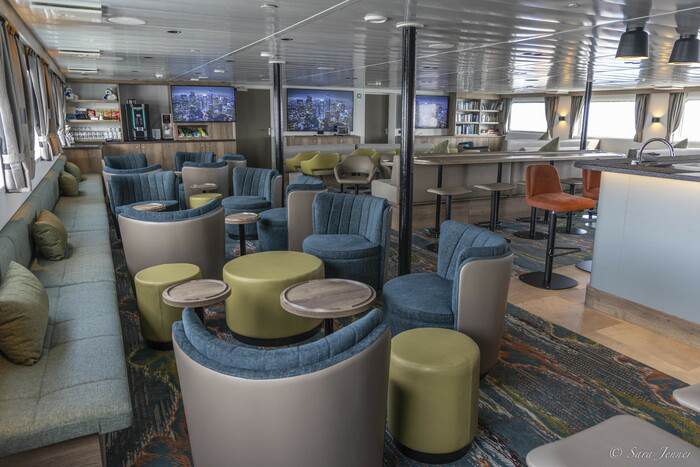
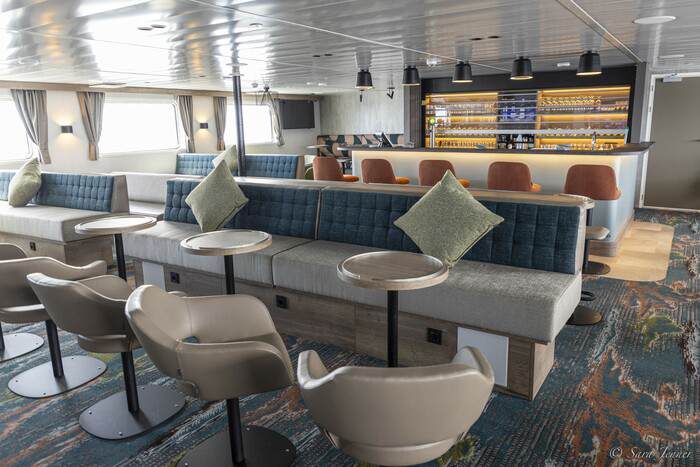




The Observation Lounge can be found on Deck 6.
Bridge




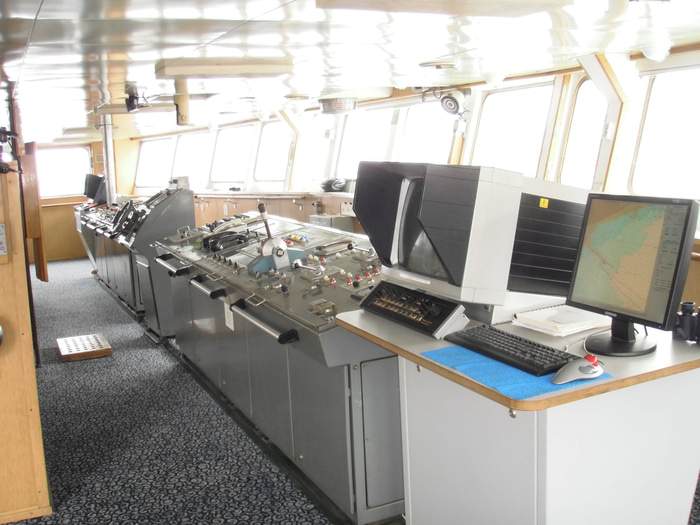

The Bridge can be found on Deck 7.
Outside Deck




The Outside Deck can be found on Deck 6.
Infotainment
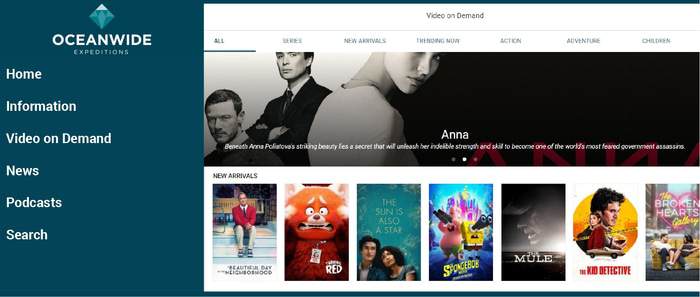
There are no health/fitness facilities on board.
There are no dedicated children's facilities on board.
Kayaking, snowshoeing, mountaineering, camping, scuba diving, and much more – our activities are as exciting as they are numerous.We provide much of the equipment you’ll need, and our fleet of Zodiacs will shuttle you to and from all outings with utmost speed and safety. Should you need more of a lift, we even bring our own helicopters on select Ortelius cruises.
It isn’t just the landscape you will experience, it’s also the immense and indelible world of wildlife that calls that landscape home. Allow us to acquaint you with the real polar survivalists that make these far-flung regions truly come alive.
Zodiac Cruising and Shore Programs


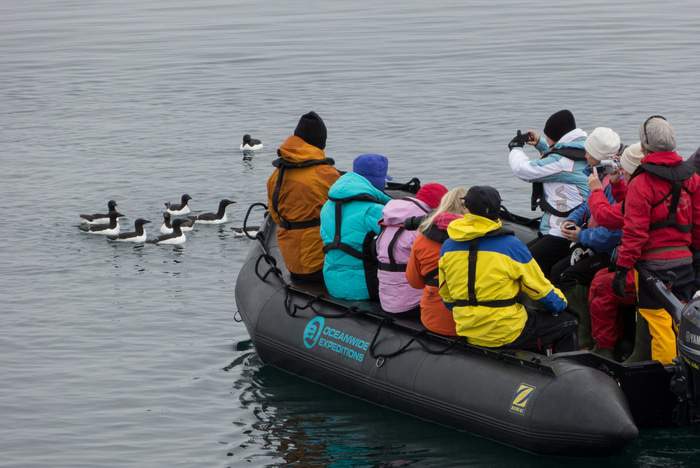


Zodiac cruising instructions
The proper handling and usage of Zodiac landing craft, is crucial for exploratory voyages. These rubber boats are ideal for our operations. They have shallow drafts, and contain six air-filled compartments which give them impressive floatation and weight carrying abilities. The compartments are connected by valves, which allow the internal air pressure to be regulated, and they will still float even if one (or several) compartments become deflated. With these safe, durable and dependable boats we can land in many, normally inaccessible sites; Such as, beaches, shallow river banks, rocky outcrops, coral reef flats, ice floes, etc., as well as more conventional places; such as, docks, sea walls and jetties.
Passengers, however, must be aware of certain regulations involving the Zodiacs in order to assure adequate safety in our landing operations.
The Zodiac driver is in charge of the boat and its operations. Please follow his or her instructions at all times.
Always wear the provided zodiac safety vests when travelling in the Zodiacs. This is for your safety, and is required at all times while in the Zodiacs regardless of weather or sea conditions.
Always accept the helping hand of crew-members and Zodiac drivers when stepping into or out of the Zodiacs at the ship’s gangway or ashore. Keep both hands free for this operation, and use the preferred ‘sailor’s grip’; i.e., grip each other by the wrist, because this gives a much stronger grip than just holding hands.
Minimize the number of separate articles taken along with you when using the zodiacs. Backpacks are ideal for consolidating such diverse objects as cameras, binoculars, rain gear, extra shoes, etc. Carryon items may be handed to the boat handlers before embarking or disembarking. Keep both hands free.
Never smoke in the Zodiacs. This is hazardous because there are exposed fuel tanks connected to the outboard engines. Lit cigarettes are also hazardous to the rubber construction of the boats.
All landing conditions will be announced beforehand; i.e., ‘wet’ landings (these may require getting your feet wet by wading ashore), ‘dry’ landings (these make use of a dock or other object with which one can step ashore directly), and expected weather conditions.
Never disembark or embark the Zodiac over the wooden transom (stern) when the boat is backed onto a beach. Oncoming waves may suddenly push the boat higher onto the beach, knocking the careless passenger with the uplifted engine and propeller, or crushing an exposed foot with the very heavy transom. During ‘wet’ landings one may safely get in or out of the boat by first sitting on the rubber pontoon and then swinging one’s leg over the side. Always wait for instructions from the driver during landings.
One should always use a weatherproof bag (or bring along a small plastic bag) to protect non-waterproof items; such as, cameras and binoculars, from sea spray (or rain) when in the Zodiacs.
Polar Diving

All of our polar voyages provide you maximum firsthand contact with local wildlife and terrain, but it is our intimate knowledge of the seas that allows us to also give you an unparalleled adventure below the waves.
Join us on one of our Arctic or Antarctic diving cruises, true expeditions in every sense of the word, during which you will have access to some of the most scenic dive sites in the polar regions.
With this exciting activity, you can explore the underbellies of icebergs, encounter exotic marine life, and enjoy the beautiful interplay of ice, light, and water in a rarely seen world. The details of our dives and itineraries are based on the extensive experience of our international guides, all of whom have worked in the polar regions for many years in various capacities. When you dive with us, you get the best polar adventure in the most capable hands.
General information on our diving activity
- Divers must be experienced with cold-water, dry-suit diving.
- We aim for one to two dives per day (one in the morning, one in the afternoon).
- Our ability to dive depends on local ice and weather conditions.
- All dive guides are certified and experienced experts in their field.
- We offer basic equipment on board (e.g., tanks, compressors, and weights), but divers must bring their own personal gear.
- We make dives from our Zodiac boats.
- Our maximum dive depth is around 20 meters / 65 feet.
- In both Antarctica and the Arctic, we may observe sea squirts, squat lobsters, spider crabs, soft corals, anemones, peacock worms, dogfish, sea snails, crabs, sea butterflies, shrubby horsetails, jellyfish, sea hedgehogs, kelp walls, and several species of starfish.
- Details on booking this activity can be found on our Dates & Rates webpage.
Ski Mountaineering



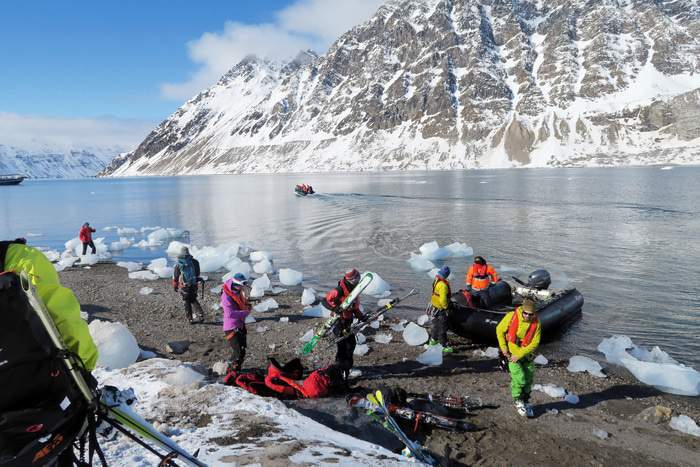
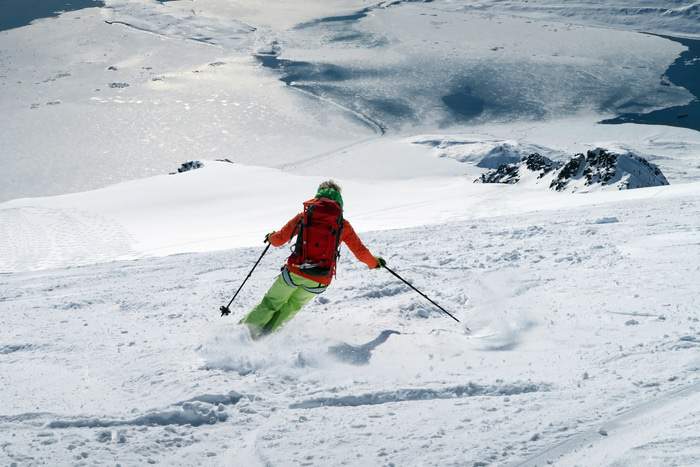



Interested in something slightly more adventurous than shoreline walks and wildlife watching? Our ski mountaineering trips give you an invigorating up-close experience of the rugged peaks and majestic mountains flanking the high Arctic fjords.
Along the way, you’ll be able to enjoy all the usual perks of polar expedition cruising: expansive scenery, exploratory outings, and the chance to see all manner of exotic Arctic wildlife.
Our ski mountaineering outings are always led by certified and experienced expedition leaders and mountain guides, such as Phil Wickens and Tim Blakemore, both of whom have been guiding in the Arctic for well over a decade.
Each morning the guides lead small groups of six to eight skiers onto the glaciers and into the mountains, typically ascending around 1,000 meters (3,300 feet) each day and often stopping for a packed lunch in the middle of the outing.
Ski excursions involve both easy mountaineering and off-piste skiing. Since the expedition is ship-based, guides have the flexibility and freedom to reach the best snow, optimal weather, and a variety of unique Arctic destinations. In order to participate, skiers must be in good physical condition, have prior ski mountaineering experience, and possess their own equipment. Guests will also be expected to demonstrate strong alpine skiing skills, both in ascents as well as descents, while on unprepared slopes of up to 35° in a variety of snow conditions.
To determine whether guests have the necessary skills for this activity, we ask all skiers to fill out a questionnaire highlighting their ski mountaineering experience beforehand. This is for the safety of our guests as well as our guides.What you need to bring on a ski mountaineering tripSki mountaineering is a technically demanding and equipment-intensive sport, so you will need to bring more personal gear than on most Oceanwide voyages.
The following is required:
- skis with touring bindings
- ski mountaineering boots
- crampons adjusted to the size of your ski boots
- skins
- ski crampons (couteaux / harscheissen)
- ski poles
- avalanche transceiver
- snow shovel
- avalanche probe
- four screw-gate karabiners
- two tape slings
- two prussic loops
- climbing harness
- ice axe
- appropriate clothing (detailed in a checklist distributed prior to trip)
Lectures
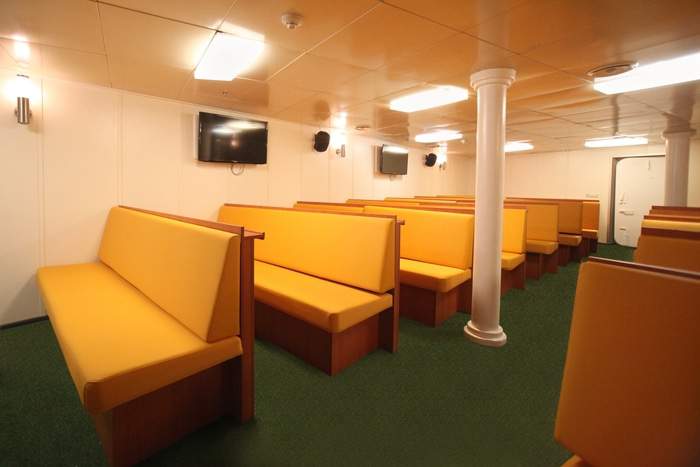
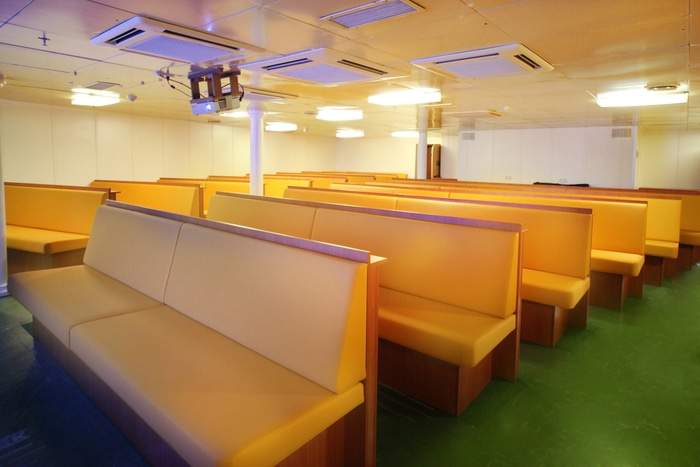


Hiking



There’s no closer way to explore a new area than on your own two feet. With this in mind, we offer a number of hiking expeditions built for all levels of hiker – from the casual walker to the hard-core hiking enthusiast.
Do you need to be an experienced hiker?
For basic walks, you just need to be in reasonably good shape and health. Hikes usually last somewhere between two and six hours. Keep in mind there are no paths and that you will be traveling over fairly rugged terrain and some small hills.We usually offer one to three different types of walks per landing site, ranging from a casual stroll to a challenging hike. In Antarctica, the longest hike takes about three hours. In the Arctic, the longest hike can last a full day, in which case we will provide you a packed lunch. All hikes are led and supervised by certified, experienced expedition guides.
How physically fit do you need to be?
Our hiking guides reserve the right to remove a passenger from the hiking group if they feel they are not in good enough health for a particular hike. This is for your safety as well as our guides.If this happens, our experienced guides will be able to recommend another hike based on your fitness level.
What kind of clothing should you take hiking?
Please bring clothing for the variable weather of the polar regions. Layers are your friend. You’re going to get hot as you hike, and layers will enable you to shed clothing without losing your overall protection against the elements.
With that in mind we suggest the following gear:
- Hiking or walking poles
- Backpack (25 liters)
- Knee-high rubber boots with a grip sole (we provide these on our larger motor vessels but not on our smaller sailing vessels)
- A waterproof bag (especially for cameras), since you are likely to get splashed during the Zodiac ride from the ship to the shore
- Straps for tying snowshoes onto your back or backpack
- Sturdy ankle-high hiking boots (you can use your rubber boots as well)
- Gaiters (knee-high waterproof protection) to keep your lower legs dry
- Sunglasses
- Sunblock
- Thin under-socks (to stop blistering) and thick over-socks (with spares)
- One-litre water-bottle
- Thermal under-gloves (fleece finger gloves) and warm outer-gloves or mittens (and spares)
- Turtleneck or neck gaiter
- Urine-collection bottle (for Antarctica), such as a wide-opening Nalgene bottle
- Thermal underwear
- Fleece jacket or vest
- Down jacket or spare fleece jacket
- Breathable waterproof jacket and trekking trousers
- Warm fleece hat
- Binoculars
Do not bring cotton clothing like T-shirts or jeans. When cotton gets wet (either from outside moisture or sweat), it will stay wet a long time – not a good thing in a cold environment.
Do the hiking activities cost more?
No, they are covered in the cost of your cruise.
Are the polar hikes safe?
Yes, as all hikes are accompanied by one or more trained and experienced expedition guides. But in the Arctic (especially Svalbard), we must keep a constant lookout for polar bears. All Arctic hiking guides carry rifles due to this possibility while in polar bear territory.
We only hike in areas that are outside glaciated terrain, since treks inside these areas bring people into contact with crevasses and are therefore considered mountaineering. Mountaineering trips are always accompanied by at least one UIAGM-certified mountain guide.
Photo Workshop


Photography trips
You might find mere words failing to express to your friends what it meant to you to get in touch with the pristine beauty of the Polar Regions. But you might also be worried that you’re no world-class photographer and that your pictures aren’t going to live up to your Arctic or Antarctic experience.
Not to worry. Select voyages have pro photographers on board who are happy to share their experience and expertise with you. So if you consider yourself only a fair photographer, or even if you can’t tell the front end of a camera from the back, you’re going to go home with some new shutterbug knowledge and a mitt-full of fantastic photographs of your trip.
The Photography Workshops
There are really two versions of the workshops. The first is one you can take while still on board the ship. This version of the workshop hosts 20 passengers at a time, which is a good number for our photo pro to give everyone the attention they need. These on-board sessions take the form of lectures and workshops and will introduce you to your equipment and the theories behind how to take a better picture.
The second version of workshop is held during excursions. These land-based sessions are for up to 14 passengers at a time. These workshops are more practical, your photo pro helping you to adjust to real-life situations such as falling snow, dim light, moving wildlife, and so on.
Do you have to bring equipment?
You do indeed have to bring your own equipment – you’ll soon find that choices in photography equipment are very much based on personal preference, and there’s no way we could accommodate everyone’s tastes.
You can bring more than just basic cameras if you choose, but keep in mind you have to be able to carry the gear and it has to fit safely on board a Zodiac for trips to the shore. You should at the very least bring a waterproof bag to carry your camera in – Zodiac trips tend to splash. For detailed packing tips, check out our photography packing blog and photography packing video, made in cooperation with one of our veteran guide-photographers.
Are photography workshops included in the cruise price or are they supplemental?
A photography workshop is covered by the overall cost in one of our Basecamp cruises. These basecamp workshops are very beginner-friendly, but still have plenty to offer those who have a few photo albums under their belt.
The other cruises do require an extra cost, and you should book your spot in the workshop with our reservations department preferably 3 months prior to your departure (our photography pros are in demand so we need to book their time well in advance).
Kayaking


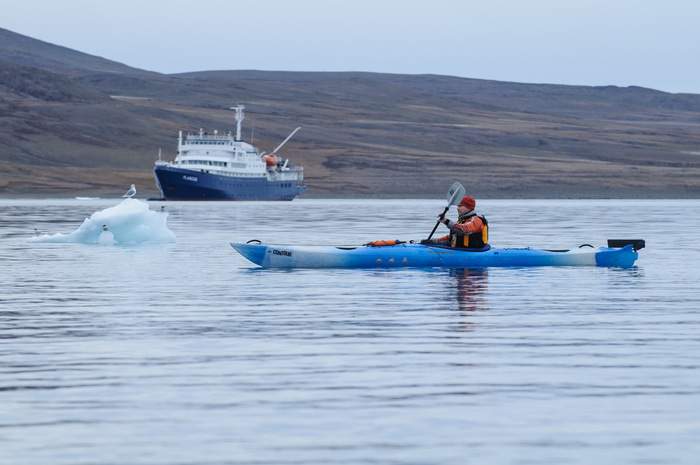
Explore the Arctic and Antarctic coastline in a kayak.
One of the best things about a polar voyage is that you’re never done exploring. Even if you think you have walked every shore, climbed every mountain, and spotted every penguin (or polar bear), there is still a whole other world to explore on the water.Polar kayaking is a great way to tour the blue-and-white beauty of the polar seas up close, visiting stunning ice formations and waterways too small for our ships to enter.
Do you need to be an experienced kayaker?
The amount of experience we require depends on the cruise you choose. If you have no experience at all, we suggest one of our Basecamp voyages, where we will happily introduce even the most inexperienced kayakers to this wonderful outdoor sport.The toughest part of kayaking in gentle waters is usually getting into the kayak itself. After that, you just have to keep a steady rhythm with your paddles.Some of our cruises require that you have more kayaking experience because they involve longer kayak excursions. These excursions expose you to water that might not be as gentle as a sheltered bay, and you stand more of a chance of encountering rougher weather conditions.You will not need to be able to do a kayak roll, but you should be able to demonstrate that you’re comfortable in a sea kayak. On these non-Basecamp excursions, our guides reserve the right to refuse you access to a kayak if it is clear you don’t have the necessary experience. This is for your safety as well as theirs.
How physically fit do you need to be?
You will want to be in decent physical shape and possess a good sense of balance. Kayaking can be demanding on your core and arm muscles.If you’re not sure if you are quite ready for kayaking, please do not hesitate to check out our kayaking FAQ or simply contact us. We would be happy to explain more about the activity and help you with any additional questions you might have.
How many times can you go kayaking?
On basecamp trips, we aim for each guest to kayak once. On regular voyages, we aim for four to six excursions per passenger who has booked the supplement. Our kayaking activity is always determined by weather and water conditions, since your safety is our primary concern.
Is polar kayaking safe?
All of our kayaking outings are led by certified and experienced guides, but you must always take caution when kayaking in the polar regions.
We will provide you with suitable outer clothing for kayaking. Kayak excursions are limited to 14 passengers per kayak guide. This number lets our guides keep track of everyone and make sure our guests are having a good time.
One guide stays with the group in a support kayak, while a safety boat follows in case of emergencies. All guides will try to scale excursions to the skill level of the group.
Do I have to bring my own kayaking equipment?
We will provide the following items:
- Seven double-seat sea kayaks on Plancius & Ortelius
- 14 double-seat sea kayaks on Hondius
- Paddles with anti-drip rings
- Basic (4 mm neoprene) wetsuits in different sizes
- Kayak spray cover
- Waterproof lightweight jacket (cagoule)
- Life jacket / kayak vest
- Neoprene boots
Please bring the following gear:
- thermal underwear, bottom and top (for under the wetsuit)
- fleece jacket or vest to wear over your thermal underwear
- gloves (insulated ski or snowboard gloves with grip or neoprene watersport gloves)
- waterproof bag (if you are bringing a camera or binoculars)
- fleece hat
- turtleneck or neck gaiter
- thick socks
- sunglasses
- sunblock
Avoid bringing cloth clothing like T-shirts or jeans. Once it gets wet (from water or sweat), it will stay wet for a long time – not a comfortable experience in polar weather!
What will I see while kayaking?
You’ll see rugged shorelines sloping up into snow-capped mountains, pristine beaches, and icebergs that turn the water beneath you a brilliant blue. You may also see some local wildlife, which the peaceful nature of kayaking makes even better.
Snowshoeing



Snowshoeing in the Arctic and Antarctica
There really is no better way to take in a new place than by exploring it on foot. With that in mind Oceanwide Expeditions offers you the chance to explore your way inland from the Polar shorelines with a wide variety of snowshoeing expeditions built for everyone. From the casual explorer to the hard-core snowshoe-er.
Do I need to be experienced? How physically fit do I need to be?
For the basic walks you just need to be in reasonably good shape and health. The snowshoe activities last usually somewhere between 2 and 6 hours. Keep in mind that there are no paths and that you will be travelling over fairly rugged terrain and will be taking on some hills.
There are usually 1 to 3 different types of walks offered per landing ranging from a casual stroll to a challenging hike. In the Antarctic the longest hike takes about 2 hours while in the Arctic the longest hike can last a full day (we send you off with a packed lunch).
We do reserve the right to suggest that a passenger try another activity if it seems like they will not be able to enjoy a particular hike. This is done partly for the enjoyment of the other passengers and partly for safety concerns – if there is a health incident there is no help beyond basic first aid in the vicinity.
Our experienced guides will be able to recommend a particular hike to you based on your fitness level. If you have any questions at all about your health or skills please don’t hesitate to get in touch with us, we’d be more than happy to help you sort out your concerns.
Do I need to bring snowshoes?
Not at all. We’ll provide you with MSR lightweight snowshoes that easily attach to rubber boots or sturdy hiking boots. If you join us on our ships Plancius, Hondius or Ortelius we also provide the rubber boots at no extra cost.However, you do want to bring clothing that is suitable for the changeable weather of the Polar Regions. Layers are your friend – you’re going to get hot as you work your way around the tundra and you’ll want to be able to shed a layer or two without losing a big percentage of your elemental protection.
With that in mind we suggest:
- Hiking/walking poles.
- Rubber boots that are high enough to get you from the Zodiac to the shore and have a good gripping sole for the shore landings and walks. (Boots are provided on the Plancius and Ortelius, not on the Rembrandt van Rijn).
- A waterproof bag (especially for cameras) – you’re likely to get splashed during the Zodiac ride from the ship to the shore.
- Straps for tying snowshoes onto your back or backpack.
- Ankle-high sturdy hiking boots for the actual treks and for wearing snowshoes.
- Sunblock.
- You might want gaiters (knee-high waterproof protection) to keep your lower legs dry while hiking.
- Sunglasses.
- A backpack (25 litres is a good size).
- Thin under-socks (to stop blistering) and thick over-socks. (Bring some dry spares as well.)
- A 1-litre water-bottle.
- Thermal under-gloves (fleece finger gloves) and warm outer-gloves or mittens (you might want a spare set of these as well).
- A turtle-neck or neck gaiter.
- A urine-collection bottle (regulations forbid leaving human waste behind in the Antarctic). Try looking for something like a wide-opening Nalgene bottle (they sell specialised versions for ladies at outdoor shops).
- Thermal underwear.
- A fleece jacket or vest.
- A down jacket or spare fleece jacket.
- A breathable (e.g. Gore-Tex) jacket and trousers.
- Trekking trousers.
- A warm fleece hat.
- You might also want to bring along binoculars, and a Thermos bottle.
Don’t bring regular cotton clothing like t-shirts or jeans if you can avoid it because if it gets wet (either from outside moisture or sweat) it will stay wet – not a good thing in a cold environment.
Mountaineering
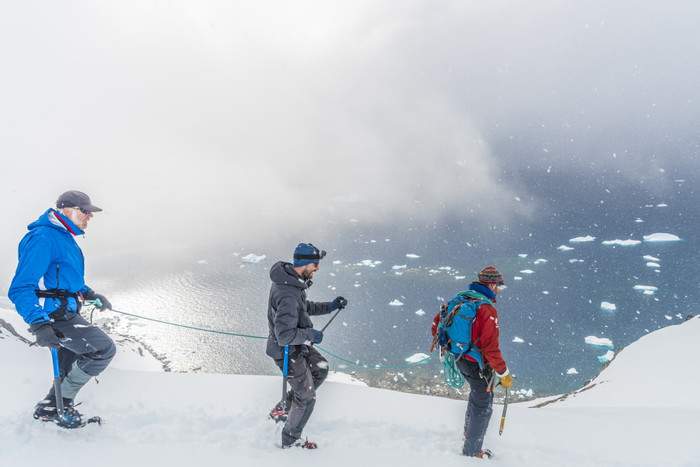


Explore the Antarctic highlands
If you’re looking to push yourself a little further on your polar voyage, mountaineering could be just what you’re after. This exhilarating activity lets you venture beyond the shorelines and into Antarctica’s higher ground, gaining vistas and viewpoints unavailable anywhere else.
Do I have to be in great physical shape for mountaineering?
You must be fit and have stamina enough to walk three or more hours over sometimes rugged terrain, both uphill and downhill.
What’s the difference between mountaineering and snowshoe hikes?
Mountaineering hikes may take you into glaciated areas that can expose you to crevasses, requiring more caution than on non-glaciated ground. You can also expect to make ascents and descents that might be challenging.
Is your mountaineering activity scaled to passenger ability?
We offer two types of mountaineering based on ability:
- Basic mountaineering is for guests of all experience levels, and we provide all the equipment needed.
- Technical mountaineering requires previous experience and special footwear you must provide yourself.
For more details, please consult our mountaineering manual.
How many mountaineering hikes will I go on?
On our Basecamp voyages, each guest will participate in every activity once as long as local conditions allow. Make sure you request mountaineering when booking this trip.
Do I have to bring any mountaineering equipment?
Some gear we provide, some you must bring yourself.
We supply the following:
- snowshoes
- muck boots
- crampons
- helmets
- harnesses
- ice axes
- screw-gate carabiners
- snap links
- mountaineering ropes
- tape slings
- prussic loops
- snow shovels
- bivouac bags
- biodegradable human waste bags (it is illegal to leave waste behind)
You must bring:
Feet
- gaiters (if bringing your own boots)
- thin synthetic under-socks to prevent blisters
- synthetic / woolen thin / thick long socks
Outer layer clothing
- down jacket
- wind and waterproof breathable jacket with hood
- wind and waterproof pants/salopettes (ski pants)
Thermal layer
- synthetic / wool fleece / pile jacket / pull-on
- synthetic/ wool fleece / pile pants / salopettes
- fleece jacket or vest
Base layer (underwear)
- synthetic / wool thin top (long/short sleeves / zipped)
- synthetic / wool thin pants / long johns
- synthetic / wool balaclava and hat
- windproof cap with peak/ear protectors
- sun hat, headband, face mask, neck gaiter / scarf
Hands
- ski / mountain gloves
- windproof over mitts
- synthetic / wool thermal mitts/finger gloves
- down mitts
- thin (base layer) synthetic / wool mitts / gloves
- mitts/gloves support (around neck)
Eyes
- facial protection
- sun glasses / glacier glasses with sides
- spare glasses / lenses
Skin
- sun block, sun screen, fatty lip salve (no water)
Hygiene
- toilet / hygiene kit : pee bottle (for camping and mountaineering), e.g. wide opening Nalgene bottle (there are special adaptor for ladies in outdoor shops available)
Miscellaneous
- personal medication
- 25 liter rucksack
- 1 liter water bottle
- waterproof bag (for camera equipment)
- straps to tie snowshoes on backpack
- film and memory cards
- hiking / walking poles
- binoculars
- head torch (flashlight)
Do not bring cotton clothing like T-shirts or jeans. Once they get wet, they will stay wet. This can increase the chance of hypothermia in sub-zero weather.
You must bring your own boots for technical mountaineering, but you can also use your own boots for basic mountaineering if you do not want to use our muck boots.
Antarctic Camping




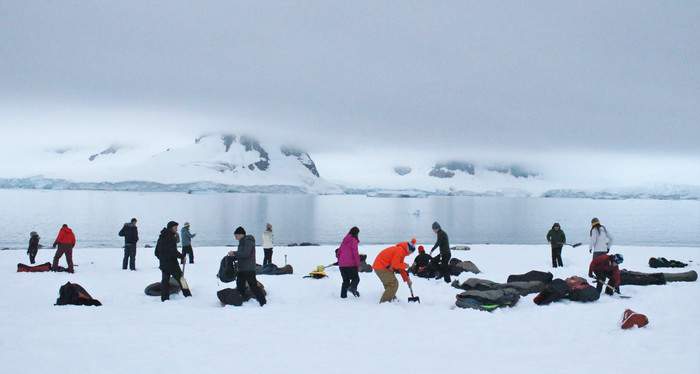
For those craving a truly immersive polar adventure, our open-air camping activity gives you the chance to experience the Antarctic wilderness as few travelers have.
We provide the necessary camping gear, including breathable bivouac bags that are wind and waterproof and a lightweight alternative to tents. And our polar sleeping bags will keep you warm, dry, and comfortable during the enchanting Antarctic night.
All campers will be assisted and supervised by experienced expedition guides.
General information on our camping activity
- Camping is available based on weather, site conditions, and environmental regulations.
- Everyone can participate, no previous experience required.
- This activity is only offered on select Hondius, Plancius, and Ortelius voyages.
- The maximum number of participants is limited to 30 per night.
- All camping activities are supervised by expert field guides.
- Basic equipment is provided by OEX (bivouac bags, mats, boots).
One camp night must be booked prior to your trip, but extra nights may be arranged on board (no waitlist). Please see our Dates & Rates for details.
Details of the Antarctic camping experience
We aim for at least one night of camping on each designated trip, but the expedition team will offer more if possible. Additional nights are determined by weather and local conditions and can only be offered when it is a possible for the vessel to stay close to shore. If the vessel has to relocate during the night, camping is not possible.
According to Antarctic Treaty and IAATO regulations, we are not allowed to take stoves, fuel, or food on shore with the exception of emergency rations, survival gear, water, and medical supplies.
The camping group will be taken to shore after dinner, and then returned to the ship before breakfast. Our camps will always be made in a place where wildlife will not be disturbed.
All campers will be equipped with a personal waterproof bag containing a sleeping mattress, synthetic sleeping bag with inner liner, and a breathable bivouac bag. Besides these personal items, other gear will also be taken to shore.
While campers are on shore, our staff will be in full radio contact with the ship at all times. Guides will also stay on shore to assist and supervise the campers. Upon departure, the campsite must be cleaned and everything returned to the ship.
Clothes to bring for camping
Please pack for the worst weather, as conditions in Antarctica can change rapidly. Below is a list of important items you must bring yourself:
- Thermal underwear, fleece vest or jacket, and down jacket that is breathable (e.g., Gore-Tex)
- Warm hat and turtleneck or neck gaiter
- Thermal under-gloves, fleece finger gloves, or warm mittens
- Thick socks with spares
- Good UV-protectant sunglasses
- Sun cream or sunblock
- Flashlight or lightweight headlamp for departures in February – March
Gear we provide for camping
- Insulated waterproof rubber boots
- Bivouac bag (one per person) and mattress
- Waterproof sleeping bag with cotton inner liner
- Portable field toilet (one per group)
Special note: Cotton clothing, such as normal T-shirts and jeans, are not advisable. Cotton tends to get wet and stay wet while moving in a cold environment. We recommend thermal underwear.
Weather conditions
Exploring remote and wild regions like Antarctica requires a sensible and flexible approach. Although there can be clear skies with bright sunshine, the weather is unpredictable. Katabatic winds caused by the icecaps and glaciers can pick up suddenly and are a fierce opponent for polar travelers. Such conditions might also lead to the cancelation of planned camp nights. If local circumstances prevent us from camping on shore, we may attempt to camp on the open decks of the ship.
In order for the camping activity to take place, we must have at least 10 passengers who intend to camp. Only 30 passengers can camp at any one time, and we always assign one expedition guide per every 20 campers to assist and supervise operations.
Lastly, we do not use tents as part of our camping equipment. Tents are greatly affected by wind in Antarctica, and using them greatly reduces the weather in which we can camp.
Instead, we have found that bivouac sleeping bags offer us the best odds of being able to follow through with our camping activity. They also provide an unparalleled experience by allowing you to see and hear all that is happening around you, from the noise of penguin calls to the sound of whale blows. They also offer the best view of the beautiful Antarctic skies.
Helicopter Tours

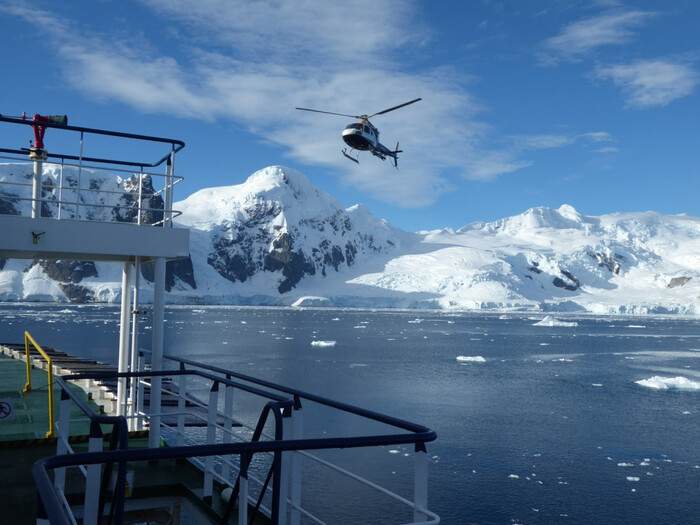
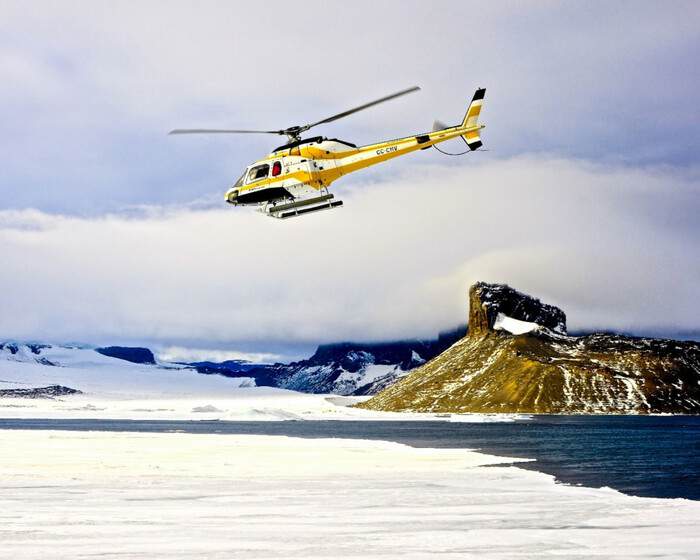
Helicopter Operation & procedures
Before flights (and sometimes before entering the helicopter), you will be briefed on the location and use of the following equipment:
- Seat belts
- Life jackets, which must not be removed until instructed.
- Life rafts
- Survival equipment
- Emergency escape hatches
When we have a helicopter ship born operation, all passengers will receive a mandatory helicopter briefing prior to the operation getting started. Anyone who doesn’t attend the mandatory briefing is not allowed to board the helicopter. During this briefing the Pilot, Expedition Leader (EL) and the Deck Party Officer (DPO) will instruct you on the procedures during helicopter operations.
Normal procedure is that you will be divided in groups of 4 or 6 (depending on seats in the helicopter). We do understand that some people prefer to fly together, but this is not always possible. We cannot have empty seats because of time restraints, and passenger weight is something we need to take into consideration as well. So when you will receive your group number this cannot be changed. Please listen carefully to announcements when your group is being called by the administrator.
As a requirement of the helicopter insurance policy all people that will board the helicopter will need to sign the waiver form. A person who doesn’t sign the waiver will not be allowed to fly. It is also an acknowledgement that you understand that helicopter operations are special and require extra caution.
A dry run with your group will be made while practicing the whole procedure. This will include being called to the muster station, dress properly, walk the route to the helicopter and enter the helicopter (when on deck, but without running engines). You will experience that helicopter operations are time-consuming. Before we can start with transferring passengers a recognisance flight will be made and when a suitable landing site on shore has been found, safety equipment needs to be transferred. Please be patient and stay clear from the helicopter operation area. After the dry run and after the first actual helicopter operation we will have a recap where you can discuss your experience.
Helicopter landings, how does it work?
You will be briefed and receive a thorough explanation of the General information for passengers.
General information
Our ship, M/V Ortelius is registered in the Netherlands and Classed by Lloyds Register of Shipping. These authorities verify yearly that we comply with the international regulations with regards to safety, environmental impact as well as ship structure.
The helicopter deck and its related facilities onboard Ortelius have been fully approved by Lloyds Register of Shipping.
Helicopter facilities onboard passenger ships are not common and do require strict rules and regulations. This information leaflet is part of the Shipboard Helicopter Operation Plan which is part of the Ship’s Management System.
The purpose of this information is to inform you about the do’s and don’ts as well as to describe the general helicopter procedure, crew and staff duties during helicopter operations and describe the flow of passengers when we are operating helicopters.
It is of the utmost importance that you fully understand the procedure, you will also be briefed about the procedure but should you after reading and after being briefed still have any questions, please do approach the staff.
The helicopter deck is located on the aft side of the vessel on deck 6. When not in use the helicopters will be stored inside the shelter/hangar. Please stay clear of this area and do not touch the helicopters while stored.
Instructions for entering a helicopter
Please make yourself aware of and comply with the instructions set out below to ensure a safe and expeditious operation. These instructions are also displayed in several positions on board the ship.
General
- Do not approach or leave from the helicopter without being cleared to do so by the DPO, who will himself have received clearance for this from the helicopter crew.
- When approaching or leaving the helicopter loading door, always adopt a crouching posture. You should walk briskly but not run. Keep within the safe approach sector of the helicopter and always keep in full view of the helicopter pilot or crewman. No clothing should be worn that is loose or could become detached or entangled during the transfer operation.
- Keep well clear of the helicopter tail rotor. The tail rotor is difficult to see because of the speed at which it rotates.
- To avoid being scorched by hot gases, stay well clear of the helicopter exhaust outlets.
- Wear a lifejacket at all times during flight over water. Note: An inflated lifejacket may hinder escape from the helicopter. Life jackets should therefore be worn un-inflated and only be inflated once outside the helicopter. Clothing which inflates automatically or with built-in buoyancy should not be worn.
- All will wear ear defender/ear protection, which will be provided by the helicopter operator.
Landing
If embarking, you should:
- Enter the operating area when instructed to do so by the DPO following clearance by the helicopter crew, and keep well down.
- Sit where directed by the helicopter crew.
- Fasten seat belt and study the in flight safety regulations.
If disembarking, you should:
- Remain seated until instructed to leave by the helicopter crew.
- Adopt the crouching position when leaving and walk briskly away from the helicopter as directed.
Helicopter operations can be influenced by a lot of factors We will only operate helicopters when this can be done within safe-limits.
Age Restrictions
Children must be at least three years old to sail with us, however we advise against travelling with children under 8 years old. We do not have an upper age restriction, but all passengers must be mentally and physically capable of making the voyage.
Accessibility
Unfortunately, we’re only able to provide voyages to passengers who meet a certain level of physical ability. Rough seas, rugged terrain, and physically demanding weather conditions are all commonly encountered during our voyages, which can at times be challenging even for people in peak physical fitness.
The added difficulty of a wheelchair or other physical disability, therefor, could prevent us from making safe and timely shore landings, which in turn may undermine our voyage schedules and potentially put other passengers at risk.
Packing Tips
The choice of clothing for cold temperatures during your Arctic or Antarctica expedition cruise is a very special matter. It depends on your individual experience whether to take warm clothes with you.
Our advice is to take warm, wind and waterproof clothes with you during the expedition. Multiple layers of medium-warmth clothing provide more insulation than a single heavier article – this is due to warm air getting trapped in between the layers, acting as further insulation. Look for clothing made of wool, silk and new synthetic fibres, all of which retain heat better than other materials.
The secret to keeping warm during an expedition is the layer principle. Layers also give you flexibility in your ability to control your temperature as you can take off a layer if you are too warm or put another layer on if you are cold. The most important layer is the outer waterproof and windproof shell.
For shore excursions we recommend you take:
- Warm and waterproof trousers
- Sweaters and a fleece jacket
- Mittens and gloves
- Woollen cap
- Warm socks
- Thermal underwear
- Water-and windproof jackets
- Backpack
- Sunglasses
- Sunscreen SPF 30+
- A pair of binoculars
- Camera and plenty of memory cards/film
- Ski poles (for snowshoeing)
- T-shirts
- Rubber boots
Rubber boots (high!) Are needed on every landing where Zodiacs are used. You can't land without boots!
Only on Plancius, Ortelius, and Hondius, rubber boots are distributed to all passengers. No boots are available on the sailing ship Rembrandt van Rijn and these must be brought along (However, no boots are required in northern Norway because we do not land with the Zodiac, only dry landings on quays).
Medical Facilities
On our motor vessels, we have an onboard doctor as well as a basic infirmary equipped to provide first-aid assistance for small injuries. If you feel sick or uncomfortable, please do not hesitate to consult the doctor. If you take special medication or are allergic to any medication, please inform us well in advance of your trip. In case of emergencies, please contact the ship’s doctor.
Wi-Fi & Cellular Service
Ortelius has internet and phone facilities (subject to satellite connection and coverage). Wi-Fi access is available throughout the ship. There are also two computer stations available for public use. You can either purchase full access to the internet in various numerations or purchase a ship email account for the duration of the voyage. We even run a cell network on board that allows you to use your mobile phone, subject to VSAT connection.
Solo Travellers
We always pair you with someone of the same gender. If you do not want to share a cabin with another passenger, you can book a twin cabin for your own individual use. The single supplement of 1.7 will then apply.
The single supplement is only applicable when you request a guaranteed single cabin. If you end up being alone in your cabin simply by chance, we do not charge the single supplement.
What to Wear
Payments
Electric Current
Non-smoking Policy
Your Physical Condition
Proximity to Wildlife
We are required to keep a minimum distance from all wildlife. This distance may vary depending on the species, but the aim is always to reduce the possibility of disturbing the animals while also keeping our passengers safe. Your expedition guides will inform you as to the distance we are required to keep from various animals.
Sometimes curious wildlife (such as penguins and young seals) may approach you, but we ask that you refrain from physically interacting with them. Please always follow local guidelines and the advice of our staff.
Preservation & Restrictions
- Avoid unnecessary damage to the ground surface and vegetarian cover, as regeneration rates are extremely slow. Do not take specimens from plants. Do not pick flowers.
- Avoid disturbing or feeding the wildlife. Be aware of your activities and whether they are resulting in a change of the animals' behaviour. Be aware that Rabies does occur on Spitsbergen, particularly in Arctic Foxes. Be careful when moving in areas where birds are nesting. If birds are disturbed and leave their nests, the uncovered eggs cool quickly and are easy prey for gulls and foxes.
- Avoid herding or alarming geese and ducks.
- On several locations on the islands, cultural monuments and items such as burial sites, blubber ovens, crosses, hunting tools, etc. are regularly encountered. Such cultural monuments are generally protected by law. It is unlawful to destroy or remove such monuments and items from the place where they are found.
- Do not take souvenirs, including whale or seal bones, live or dead animals, rocks, fossils, plants, or other organic material.
Pregnancy
You can travel if you are pregnant, although with certain restrictions. Please first consult your gynecologist and obtain all necessary medical advice before booking or making a voyage with Oceanwide Expeditions.
Also, be aware that we may not be able to provide you a voyage at all if your pregnancy has advanced beyond a certain point (usually 29 to 36 weeks, depending on your circumstances). Our onboard infirmaries are not equipped to accommodate pregnancies, and our areas of operation are almost always very far from any hospital.
Moreover, our standard seasickness medication may not be suitable for pregnant women, in which case you will need to find an alternative. For any other questions you might have about this topic, please feel free to contact us.
Sustainability


We are all guests in the polar regions, which means we must do everything we can to leave these incredible areas as untouched by our passage as possible. Here are some ways we do this.
Promoting polar awareness
In 1983 the Arctic Centre of Groningen University in the Netherlands launched a research program to Spitsbergen, the largest island of the Norwegian archipelago of Svalbard. This research program, which became known as the Plancius Foundation, was the first operator to organize yearly expedition voyages to Svalbard.Oceanwide Expeditions continued these voyages upon its formation in 1993.
Updating our vessels
Foremost among our sustainability goals is actively reducing the impact and emission of our vessels, investing in new technology and continuously improving our existing resources.
Waste reduction & removal
We limit onboard waste production by recycling as often as we can as well as banning single-use plastics on any of our vessels.
Supporting local, staying green
Buying our products locally whenever possible is our way of reducing transportation impact while also supporting local communities.
Protecting the wildlife
One of the chief reasons for visiting the polar regions is the exotic animals. And because it is such a privilege to watch undisturbed wildlife in its natural habitat, we dutifully and passionately adhere to all AECO and IAATO wildlife guidelines, avoiding any disturbance to these enchanting creatures.
Assisting scientists
Science is a central part of Oceanwide’s culture and history, starting with our roots in the Plancius Foundation. But it is also vital to our growing understanding of the polar environment.
Providing a positive polar experience
We have an unwavering belief in the long-term benefit of polar education and advocacy, and we feel there is no better way to accomplish this than through positive first-hand experience.
Our ultimate goal, then, is to create and contribute to an expedition industry that protects the polar regions as much as it reveals their transformative beauty to the world, because while these areas are too good not to share, they are also too precious not to protect.
Internet Access
There are facilities on board to send emails and call via satellite. Depending on location, you may also be able to use your personal cell phone. Aboard all of our motor vessels, m/v Hondius, m/v Plancius, and m/v Ortelius, complimentary internet connectivity via Wi-Fi is provided. All guests have access to 1.5 GB of data usage per day, which resets every 24 hours.
For guests requiring additional internet connectivity, vouchers can be purchased onboard. It is possible to purchase additional internet data in the following increments:
- 5 GB: € 25
- 10 GB: € 50